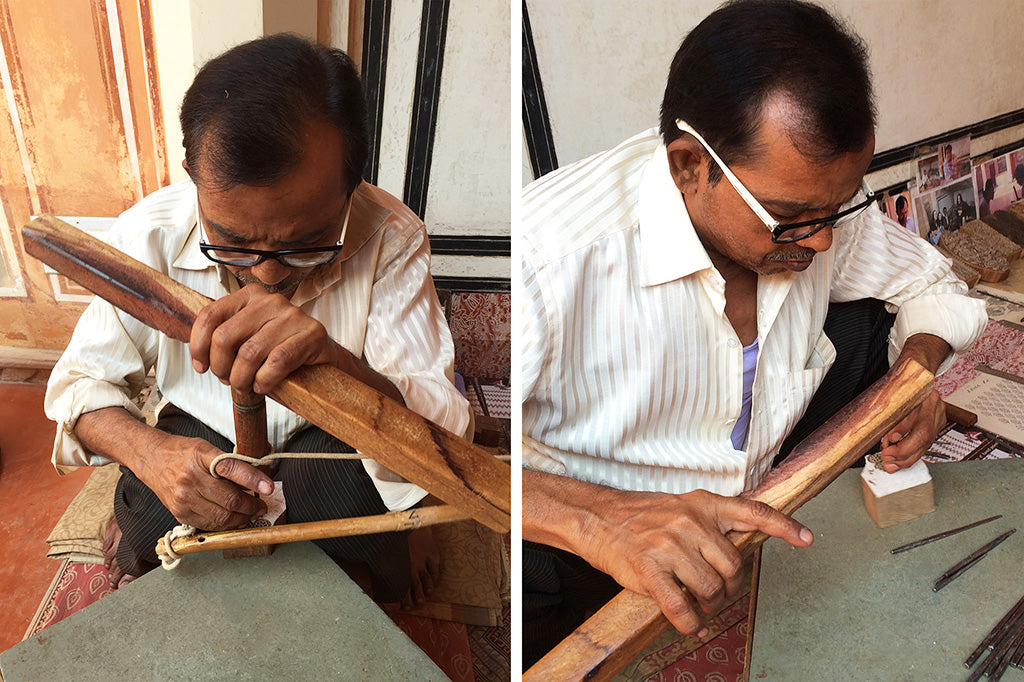The Fabric Printing Block

Well known 'Palace of the Winds' facade in the centre of Jaipur reflects the highly detailed, creative style in so many of the city’s buildings. This delicacy and close attention to detail is also evident in the designs created by the block makers and printers, using the simplest of traditional hand tools.
Indian block printing historically was highly prized and as such was traded to other countries, with examples unearthed in Cairo back to the 14th century. Older examples of Rajasthani prints have even been found in Palmyra in Syria, (a Roman trading town) and other examples have been discovered in Pakistan dating back 4,000 years.
The block printing artisans were supported with royal patronage and by the rich. More elaborate, multi colour pieces were very expensive and considered luxury goods, with many patrons creating extensive collections. Ordinary citizens also purchased simpler affordable designs from the local 'chippas' to be worn to festivals and other special events.
Making the Block - Our days in Bagru and Sanganer


Seeing these talented craftsmen in their dusty workshop as they revealed a delicate and intricate design in Indian rosewood was spell binding! We watched happy faces and heard the delightful ‘tap tapping’ of hammer and chisel and the quiet whirr of the hand operated wood drills as a few finished pieces were handed over for us to examine …
AND we were only meters from a noisy, bustling main road – not all creative work happens in isolated rural communities!
Basic hand tools made to the artist’s design were used to skillfully drill, carve and smooth the wood as the intricate relief design appeared from the white painted surface of the block.

As most block printed designs require coordinated blocks, sometimes up to five to create intricate designs with many colors, the block makers were busy making a set for each printed design. Basic designs use the ‘gudh’ or background block, then comes the ‘rekh’ or outline block, then the ‘datta’ or filler block. There were blocks everywhere!

Detail from a 'rekh' wood block ready for printing shows the fine detail of its construction and the fragility of the fine lines defining the pattern. A simple handle was added and a test carried out to ensure the block provided a clean, precise and even image.

While some designs are printed using fine, delicate blocks and colour only, others are created using 'resist' techniques, seen here with an added coating of sawdust to prevent smudging until the color is applied. The whole process seemed a bit random to us at times, but the master printers know exactly what they are doing ...
We came away with the feeling that the love and attention instilled by the craftsmen into making and applying the natural wooden blocks is what helps to create the wonderful vibe you get when you wear handmade prints!


